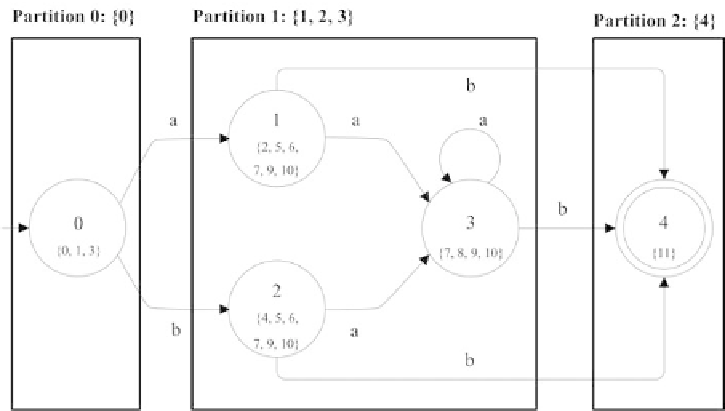Java Reference
In-Depth Information
For example, beginning in any state in the partition f0; 1; 2; 3g, an a takes us to one of
the states in f0; 1; 2; 3g;
m(0;a) = 1;
m(1;a) = 3;
m(2;a) = 3; and
m(3;a) = 3:
So, our partition f0; 1; 2; 3g is ne so far as moves on the symbol a are concerned. For
the symbol b,
m(0;b) = 2;
but
m(1;b) = 4;
m(2;b) = 4; and
m(3;b) = 4:
So we must split the partition f0; 1; 2; 3g into two new partitions, f0g and f1; 2; 3g. The
question arises: if we are in state s, and for an input symbol a in our alphabet there is no
dened move,
m(s;a) = t;
What do we do? We can invent a special dead state d, so that we can say
m(s;a) = d;
Thus defining moves from all states on all symbols in the alphabet.
Now we are left with a partition into three sets: f0g, f1; 2; 3g, and f4g, as is illustrated
in Figure 2.18.
FIGURE 2.18 A second partition of DFA from Figure 2.16.
We need not worry about f0g and f4g as they contain just one state and so correspond








Search WWH ::

Custom Search